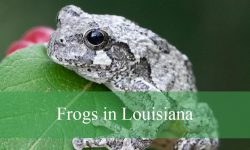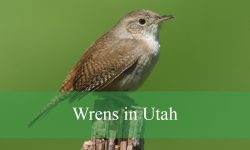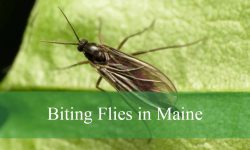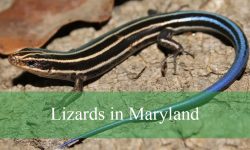Green birds are some of the most vibrant and captivating creatures in the avian world. With their rich, emerald plumage, these birds stand out in the wild, adding a burst of color to forests, gardens, and open landscapes. Whether you spot them in your backyard or while trekking through dense rainforests, green birds are sure to leave a lasting impression. This article explores 50 different types of green birds, showcasing their stunning beauty and unique characteristics.
From small songbirds to large, striking parrots, green birds come in various species, each with its own distinct traits and behaviors. Their coloration can range from bright lime greens to deep olive shades, often accompanied by hints of yellow, blue, or red. These birds are not only visually appealing but also play crucial roles in their ecosystems, helping with seed dispersal, pest control, and pollination.
In this guide, we will introduce you to a diverse collection of green birds, providing identification tips, fascinating facts, and photographs to help you recognize them in the wild. Whether you are a birdwatching enthusiast or simply curious about these remarkable creatures, you’ll find valuable information about each bird species, making it easier to spot and appreciate these stunning green-feathered wonders.
Different Types of Green Birds
Acadian Flycatcher
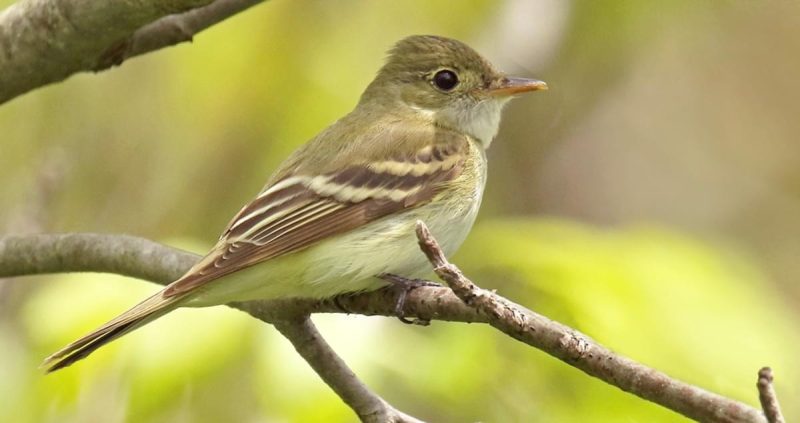
The Acadian Flycatcher (Empidonax virescens) is a small songbird known for its olive-green back, pale underparts, and faint white eye-ring. This species has a relatively long primary projection, giving its wings a slightly pointed appearance. Its call is a sharp “peet-seet” that echoes through dense woodlands.
Identifying this species can be challenging due to its resemblance to other flycatchers in the Empidonax genus. It is best recognized by its sharp call, long wings, and slightly crested head. The beak is relatively large, with a pale lower mandible that contrasts against its darker upper mandible.
Acadian Flycatchers inhabit mature deciduous forests, particularly in riparian zones and bottomland forests across the eastern United States. They migrate to Central and South America during the winter, preferring humid, tropical lowland forests for their seasonal retreat.
Common Chiffchaff
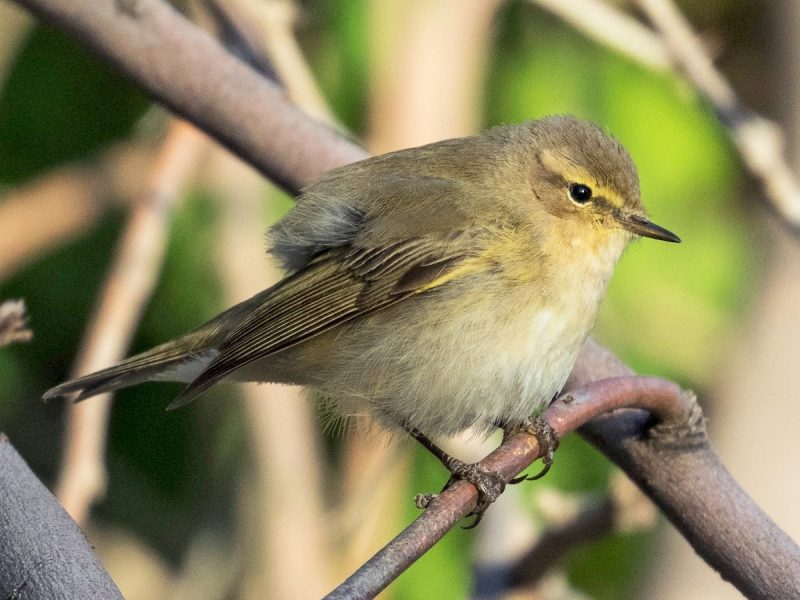
The Common Chiffchaff (Phylloscopus collybita) is a small warbler with a slender build, brownish-olive upperparts, and pale yellowish underparts. It has a thin, slightly curved bill and dark legs, which help distinguish it from other similar warblers. Its wings appear relatively short, adding to its compact appearance.
One of the most reliable ways to identify the Common Chiffchaff is through its song—a repetitive “chiff-chaff” that gives the species its name. It also exhibits a characteristic tail-wagging behavior. Though it resembles the Willow Warbler, the Chiffchaff has darker legs and a more abrupt, choppy song.
This species breeds across Europe and parts of Asia, favoring woodlands, scrubby areas, and parks. During migration, it moves southward to winter in North Africa, the Mediterranean, and parts of South Asia, thriving in open forests and gardens.
Dusky Flycatcher
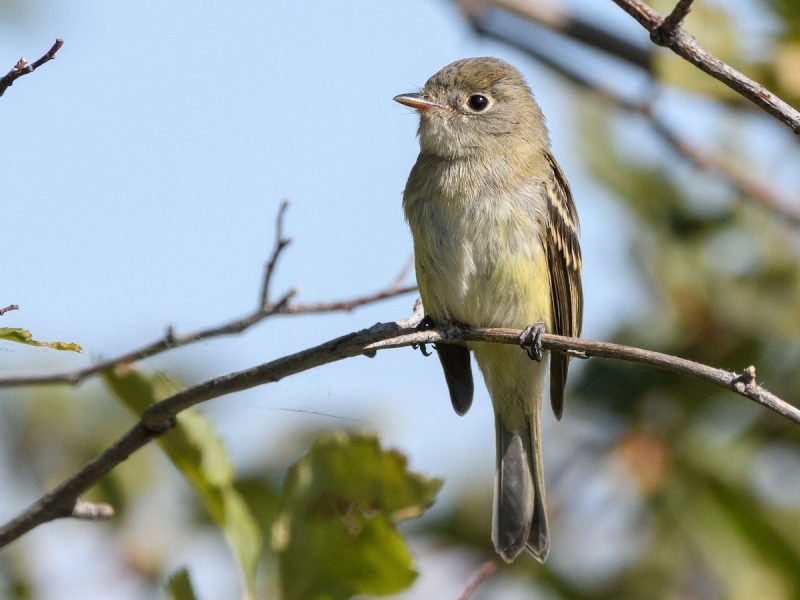
The Dusky Flycatcher (Empidonax oberholseri) is a small and subtle bird with grayish-olive upperparts and pale yellowish underparts. It features a faint white eye-ring and a delicate bill, which is slightly longer than that of some other Empidonax flycatchers.
Distinguishing the Dusky Flycatcher from its close relatives can be tricky. Its muted plumage and lack of bold markings make voice recognition an essential identification tool. The species gives a sharp “wit” call and a soft, descending song. It also flicks its tail more frequently than other flycatchers in its range.
This species breeds in mountainous regions of western North America, favoring open woodlands, shrubby slopes, and coniferous forests. During winter, it migrates to Mexico and Central America, where it occupies dry forests and thorn scrub habitats.
Hammond’s Flycatcher
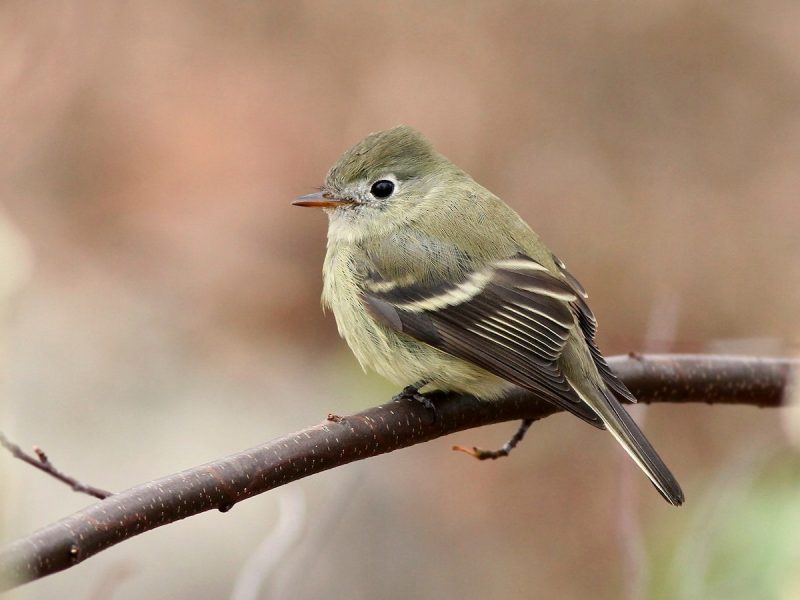
Hammond’s Flycatcher (Empidonax hammondii) is a small, insectivorous bird with a grayish-green back and pale yellowish underparts. It has a bold, white eye-ring and a small, dark bill, which helps differentiate it from similar species. Its relatively long wings give it a sleek appearance.
This species is often confused with the Dusky Flycatcher, but it can be distinguished by its slightly shorter tail and more frequent perching behavior. It has a high-pitched, thin song and a distinctive “peep” call. When perched, it tends to stay higher in the canopy compared to other Empidonax flycatchers.
Hammond’s Flycatcher breeds in montane coniferous forests across western North America. During migration, it moves to Central America, where it inhabits cloud forests and wooded areas at mid-to-high elevations.
Western Flycatcher
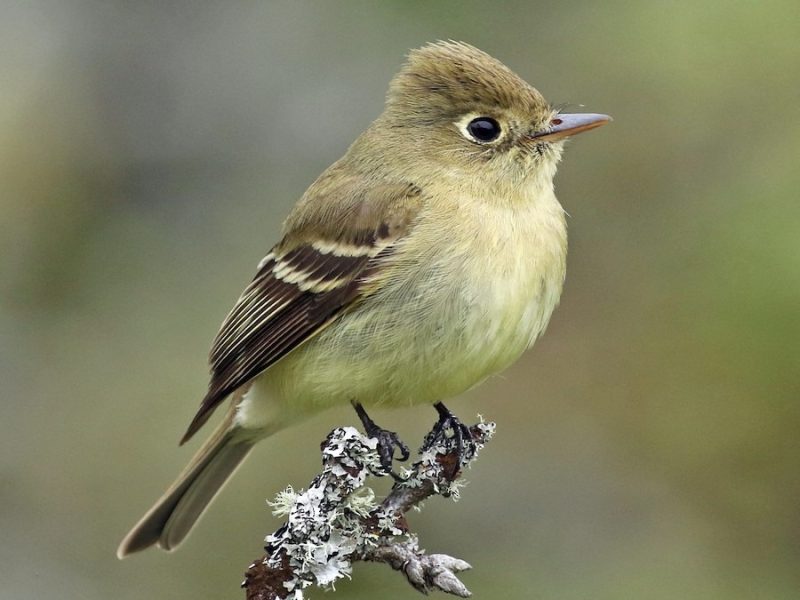
The Western Flycatcher (Empidonax difficilis) is a small bird with olive-green upperparts, yellowish underparts, and a prominent white eye-ring. This species was once considered part of the Pacific-slope Flycatcher and Cordilleran Flycatcher complex, but genetic studies have helped define its range.
Identification of the Western Flycatcher is tricky due to its similarities with other Empidonax species. It is best distinguished by its slightly peaked crown, long primary projection, and distinctive rising whistle-like call. Its bill is relatively broad, with a pale orange lower mandible.
This flycatcher breeds in the western United States and Canada, favoring moist coniferous forests, especially in mountainous regions. During winter, it migrates to Mexico, where it prefers humid, shaded forests with abundant insect life.
Yellow-bellied Flycatcher
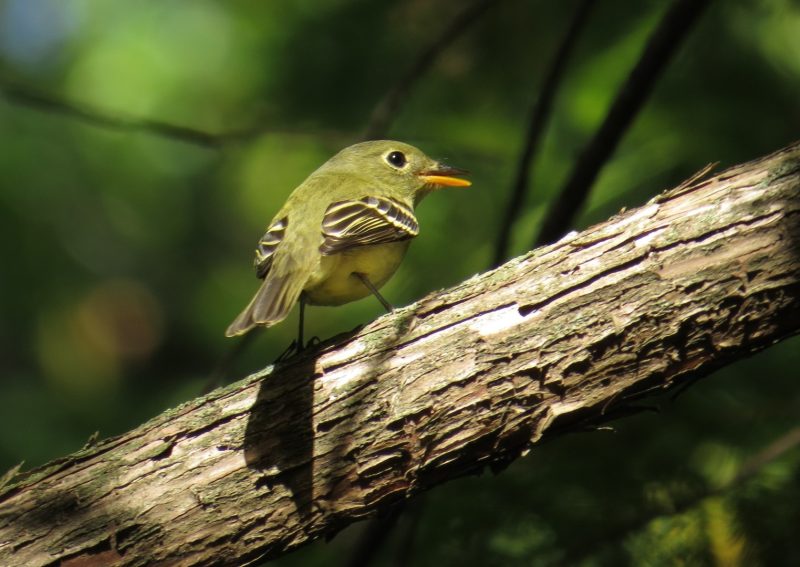
The Yellow-bellied Flycatcher (Empidonax flaviventris) is a small, bright greenish-olive flycatcher with a distinct yellow wash on its underparts. It has a prominent white eye-ring, giving it a wide-eyed appearance. The bill is broad and relatively short, with a pale lower mandible.
This species can be tricky to differentiate from other Empidonax flycatchers, but its bright yellow belly and habit of frequent perching in dense foliage help with identification. Its call is a sharp “chu-wee,” and its song is a short, buzzy phrase often heard in its breeding range.
Yellow-bellied Flycatchers breed in boreal forests of Canada and the northern United States, where they prefer moist, mossy woodlands. In winter, they migrate to Central America, particularly in cloud forests and dense understory habitats.
Greenfinch
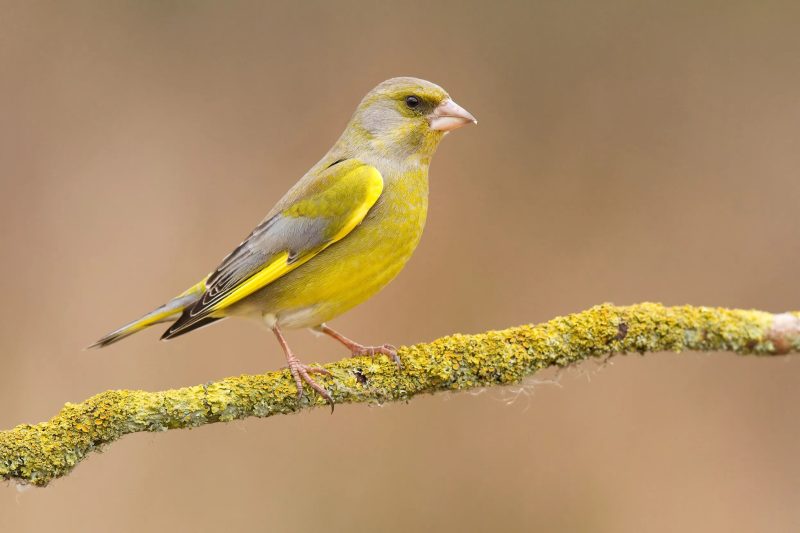
The Greenfinch (Chloris chloris) is a small, stout songbird with bright green plumage, yellow flashes on its wings, and a thick, conical bill. Males tend to have a more vibrant green color, while females and juveniles appear duller with more brownish tones. Their sturdy beaks make them well-adapted to cracking open seeds.
This species is often found in gardens, woodlands, and farmland, where it feeds on seeds, buds, and berries. Greenfinches are social birds and can be seen flocking together, especially in winter. Their call is a distinct wheezy “dwee” sound, and their song is a mixture of trills and twitters.
Native to Europe, North Africa, and parts of Asia, Greenfinches thrive in a variety of habitats, from parks to open woodlands. Some populations migrate to southern regions in winter, while others remain in their breeding grounds year-round.
Golden-crowned Kinglet

The Golden-crowned Kinglet (Regulus satrapa) is a tiny, energetic bird with olive-green upperparts and pale underparts. It is best recognized by its bright yellow or orange crown stripe, bordered by black, which gives it its name. This stripe is more pronounced in males, who can raise it into a crest when excited.
Despite their small size, these birds are highly active, constantly flitting among tree branches in search of insects and spiders. They often hover while foraging and can be seen hanging upside down on twigs. Their high-pitched calls and rapid, tinkling song make them easy to locate in dense foliage.
Golden-crowned Kinglets inhabit coniferous forests across North America, from Canada to the northern United States. They migrate southward during winter, expanding their range to include mixed woodlands and suburban areas, where they continue their non-stop foraging behavior.
Amazon Kingfisher
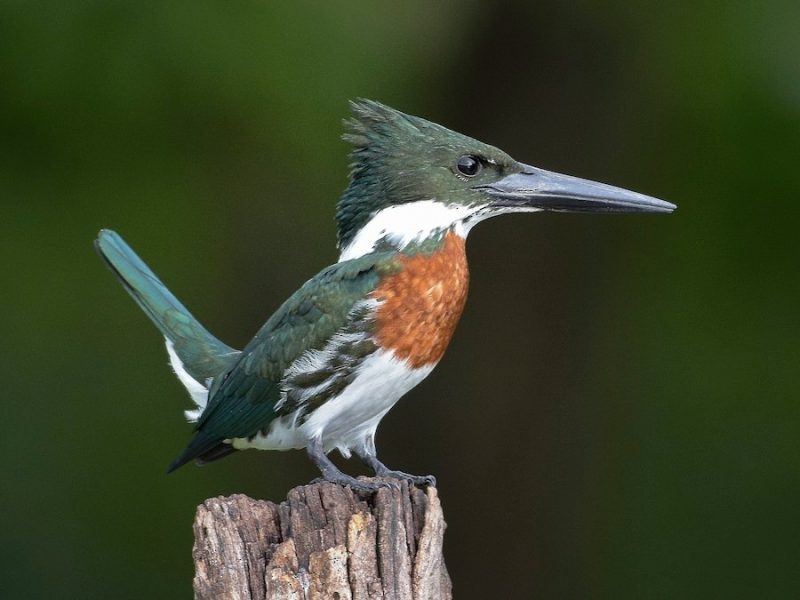
The Amazon Kingfisher (Chloroceryle amazona) is a medium-sized kingfisher with a striking green body, white underparts, and a long, sharp bill. Males have a rich chestnut-colored band across their chests, while females have a greenish band. Their large heads and sturdy beaks make them well-suited for catching fish.
These birds are often seen perched on branches overhanging rivers and streams, where they patiently wait for fish to swim below. When they spot prey, they dive swiftly into the water, using their powerful beaks to snatch up small fish and aquatic insects.
Amazon Kingfishers are found in tropical regions of Central and South America, mainly near freshwater rivers, lakes, and mangroves. They prefer slow-moving water bodies where fish are abundant, making them a common sight along riverbanks and estuaries.
Green Kingfisher
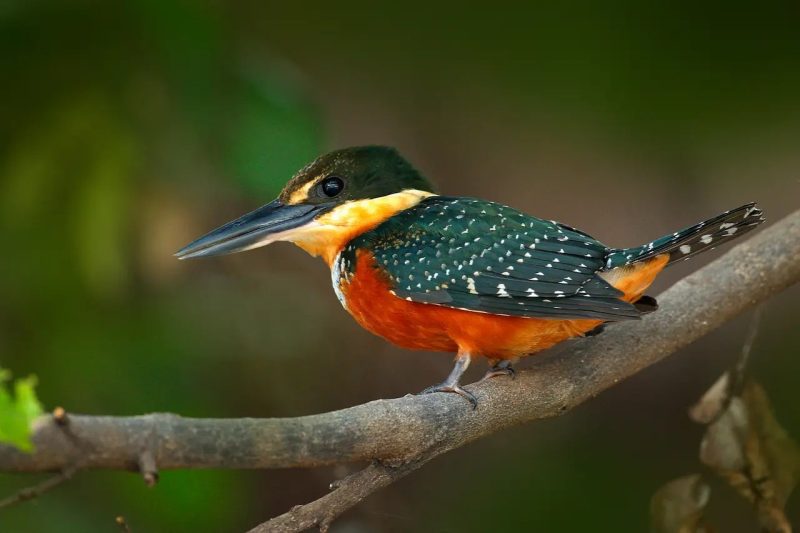
The Green Kingfisher (Chloroceryle americana) is a small but striking bird with deep green upperparts, a white collar, and a speckled chest. Males have a bright rufous patch on their underparts, while females display greenish markings instead. Their compact size and sharp, pointed bill make them agile hunters.
Unlike their larger relatives, Green Kingfishers tend to stay closer to the water’s surface, often perching low on branches or rocks. They dive swiftly into the water to catch small fish, insects, and crustaceans, then return to their perch to consume their prey.
This species is widespread across Central and South America, extending into the southern United States. It prefers slow-moving rivers, streams, and mangrove swamps, where it thrives in warm, humid environments with abundant aquatic life.
Green Jay
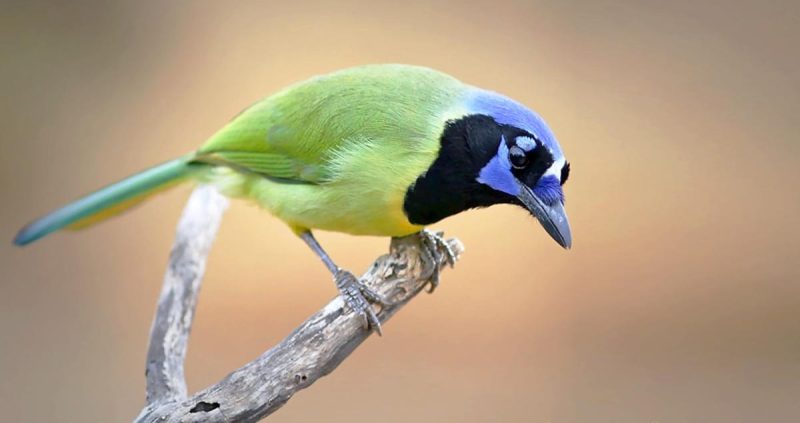
The Green Jay (Cyanocorax yncas) is a brilliantly colored bird with vibrant green plumage, a blue-and-black head, and a long, slightly curved tail. Its bold markings and striking coloration make it one of the most eye-catching jays in the Americas.
These highly intelligent and social birds are known for their loud, varied calls and playful behavior. They often travel in small groups, foraging for fruit, insects, and small vertebrates. Their ability to mimic sounds and their complex vocalizations help them communicate within their flocks.
Green Jays are found in tropical and subtropical forests from southern Texas to Central and South America. They prefer dense woodlands and scrubby areas, where they blend seamlessly into the green foliage. They are often spotted in wooded riverbanks and coffee plantations.
Ruby-crowned Kinglet
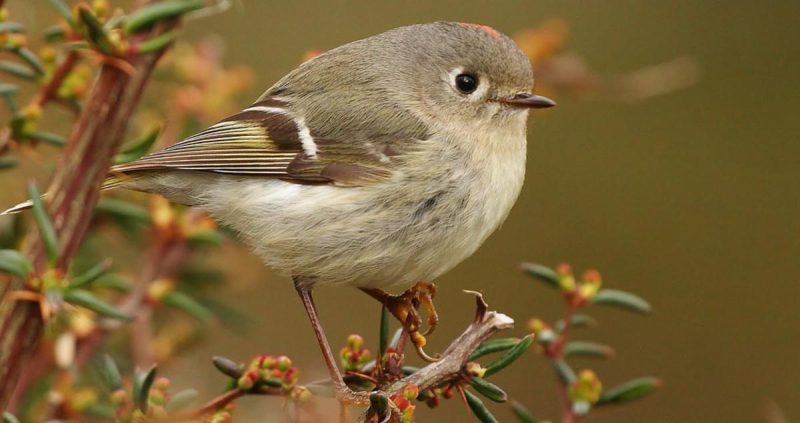
The Ruby-crowned Kinglet (Regulus calendula) is a tiny, energetic bird with olive-green plumage and a white eye-ring. Males have a hidden ruby-red crown that becomes visible when they are excited or displaying aggression. Their small, round bodies and constant movement make them easy to spot.
This species is known for its rapid wing flicking and restless behavior as it hops through trees in search of insects and spiders. Despite their small size, they have a loud, melodious song and a distinctive, high-pitched call that carries through the forest.
Ruby-crowned Kinglets breed in boreal and montane forests across North America, preferring coniferous woodlands. During winter, they migrate southward to the United States and Mexico, where they are commonly found in woodlands, parks, and backyard gardens.
Rosy-faced Lovebird
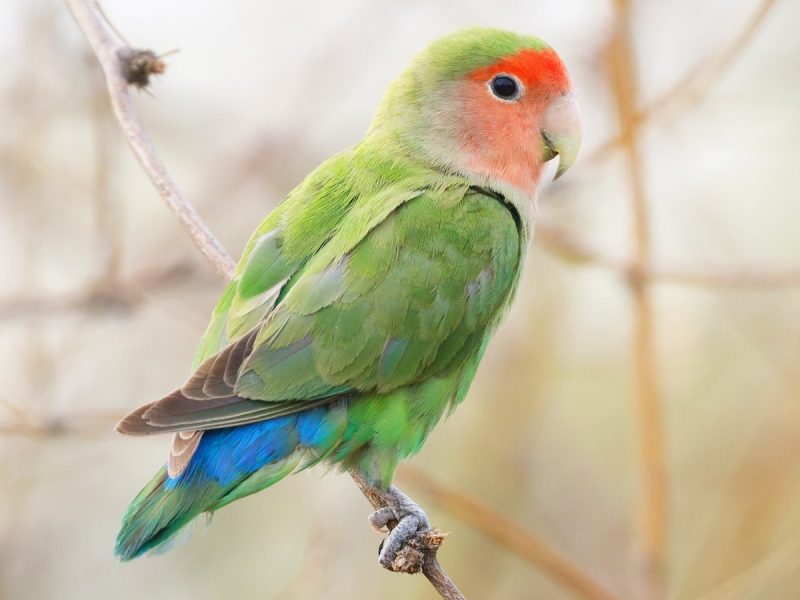
The Rosy-faced Lovebird (Agapornis roseicollis) is a small, vibrant parrot with bright green plumage, a peachy-pink face, and a blue rump. Their short, stocky build and strong beak make them excellent climbers and chewers. These birds are highly social and form strong bonds with their mates, often engaging in affectionate behaviors like preening.
Identifying Rosy-faced Lovebirds is easy due to their striking coloration and playful personality. They have a loud, chattering call and are often seen in pairs or small flocks. Their wings are relatively short and rounded, allowing them to maneuver swiftly through trees and shrubs.
Native to the arid regions of southwestern Africa, these lovebirds thrive in dry, open woodlands and savannas. They are also popular in captivity and have established feral populations in some urban areas, particularly in Arizona, where they adapt well to warm climates.
Barred Parakeet
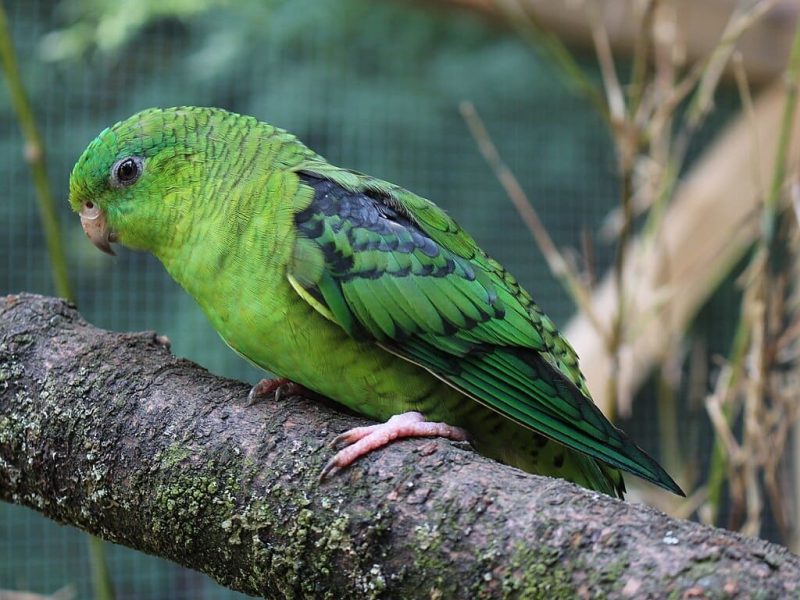
The Barred Parakeet (Bolborhynchus lineola), also known as the Lineolated Parakeet, is a small parrot with a predominantly green body and fine black barring on its back and wings. This intricate feather pattern gives it a unique, textured appearance. Unlike many parakeets, it has a quieter demeanor and a more subtle vocalization.
One of the key identification features of the Barred Parakeet is its compact, stocky body and relatively short tail. Its dark eyes and soft, warbling calls set it apart from noisier parrot species. In flight, it shows a graceful, gliding motion with minimal wing flapping.
Barred Parakeets are found in the high-altitude cloud forests of Central and South America, particularly in Mexico, Panama, and the Andes Mountains. They prefer humid, densely vegetated areas where they feed on fruits, seeds, and tender plant shoots.
Brown-throated Parakeet
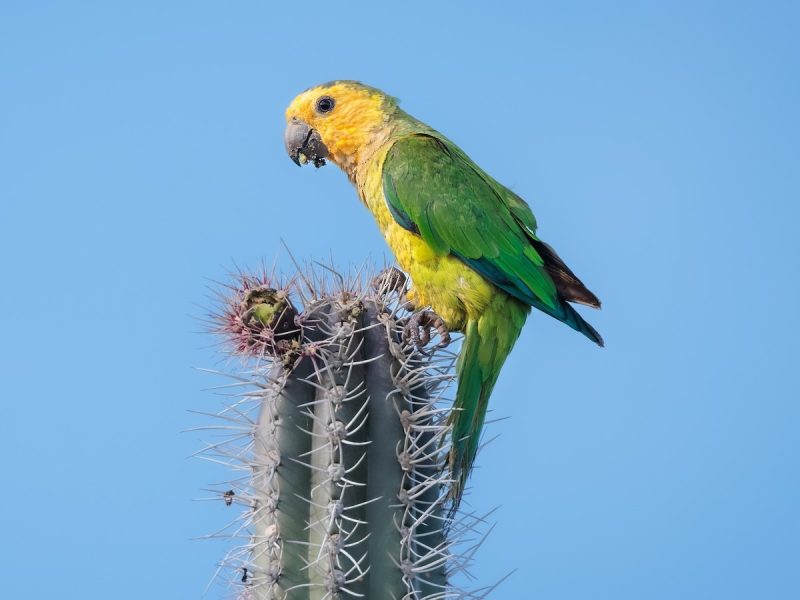
The Brown-throated Parakeet (Eupsittula pertinax) is a medium-sized parrot with green plumage, a yellowish-orange face, and a brownish throat that gives it its name. Its long tail and strong, curved beak make it an agile flier and an efficient forager.
This species is known for its social nature, often forming noisy flocks that communicate with loud squawks and chatter. It can be distinguished from other parakeets by its brown-tinged throat and the subtle orange wash on its face and chest. Juveniles have duller colors than adults.
Brown-throated Parakeets inhabit a variety of environments, including dry forests, savannas, mangroves, and even urban areas in northern South America and the Caribbean. They have adapted well to human presence and are frequently seen in gardens and agricultural fields.
Carolina Parakeet

The Carolina Parakeet (Conuropsis carolinensis) was a strikingly colorful bird with bright green plumage, a yellow head, and an orange face. Once native to the southeastern United States, this parrot species was sadly driven to extinction due to habitat loss and hunting.
It was one of the few parrot species native to North America, easily recognizable by its vibrant colors and long, pointed tail. Carolina Parakeets were highly social birds, living in large flocks and communicating through sharp calls. They primarily fed on seeds, fruits, and flowers.
Historically, they thrived in forests and riverine habitats from Florida to the Midwest. However, excessive hunting for their feathers and the destruction of their natural habitat led to their decline. The last known wild Carolina Parakeet was seen in the early 20th century, marking a tragic loss for North America’s avian diversity.
Green Parakeet
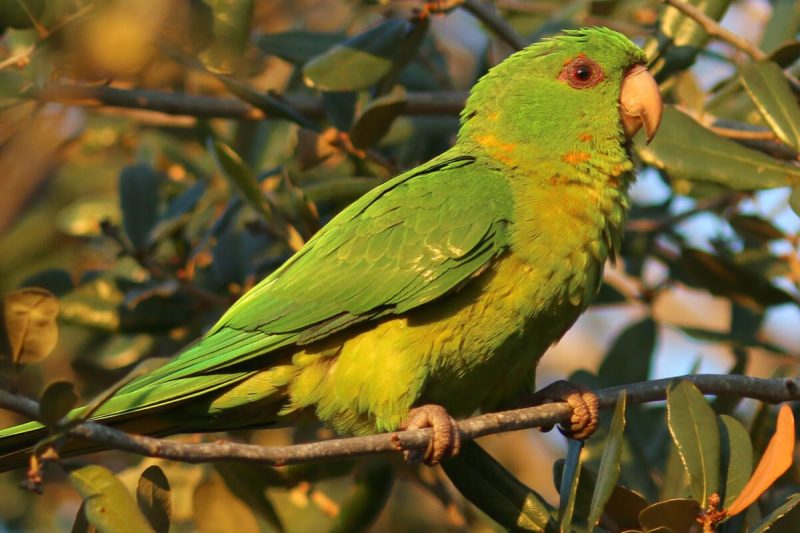
The Green Parakeet (Psittacara holochlorus) is a medium-sized parrot with bright green plumage, a long tail, and a pale beak. Unlike some other parakeets, it lacks bold facial markings, giving it a more uniform appearance. In flight, its long, pointed wings give it a swift and agile movement.
This species is known for its loud, raucous calls, often forming flocks that gather in trees or fly together in noisy groups. While primarily green, some individuals may have slight yellowish or bluish tinges on their feathers. They are strong flyers and often travel in search of food.
Green Parakeets are native to Mexico and parts of Central America, where they inhabit forests, grasslands, and urban areas. They have also established small feral populations in Texas, adapting well to suburban environments and feeding on cultivated crops and fruit trees.
Mitred Parakeet
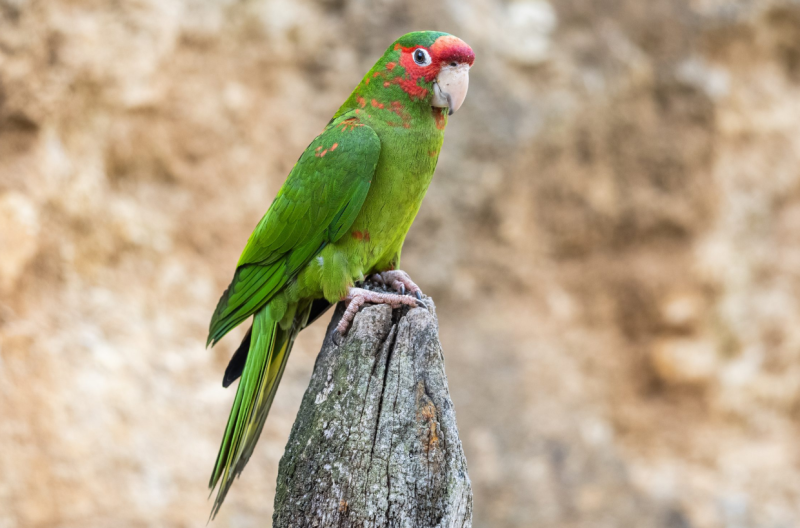
The Mitred Parakeet (Psittacara mitratus) is a striking green parrot with red facial markings and scattered red feathers on its head and neck. Its name comes from the red “mitre-like” pattern on its face, which varies between individuals. It has a long tail and a robust, curved beak adapted for cracking seeds and nuts.
Unlike many other parakeets, Mitred Parakeets can be identified by their patchy red markings, which can extend onto their wings and chest in some individuals. They are highly social birds and often found in large, noisy flocks that engage in synchronized flight patterns.
Native to the forests and mountainous regions of South America, particularly in Peru, Bolivia, and Argentina, these birds have also been introduced to several U.S. cities, including Los Angeles and Miami. In urban environments, they thrive in parks and residential areas, where they feed on fruits, flowers, and seeds.
Monk Parakeet
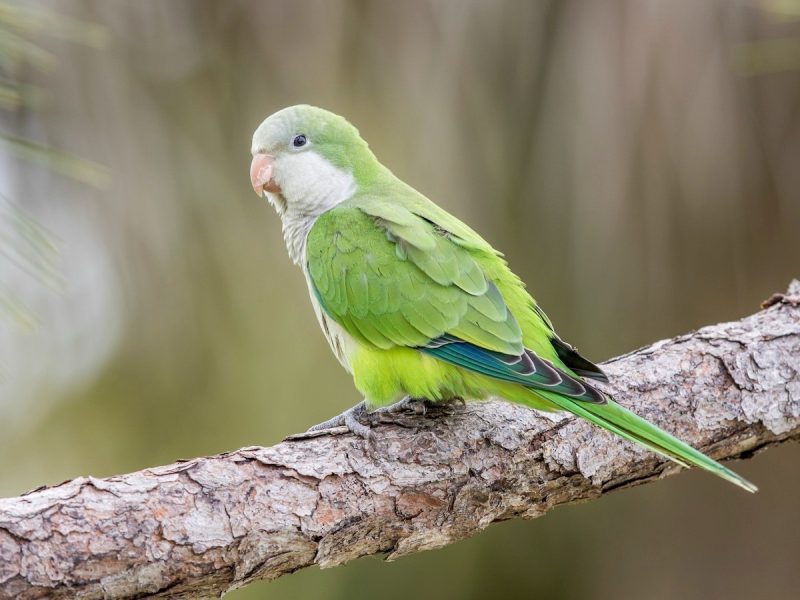
The Monk Parakeet (Myiopsitta monachus), also known as the Quaker Parrot, is a small, stocky parrot with bright green plumage, a grayish-white face and chest, and a long, tapered tail. Its short, curved beak and strong feet make it an excellent climber and forager.
Unlike most parrots, Monk Parakeets build large, stick nests rather than nesting in tree cavities. These communal nests can house multiple pairs and are often found in trees, power poles, or other structures. Their chattering calls and social nature make them a lively presence in their habitat.
Native to South America, Monk Parakeets have been introduced to many parts of the world, including the United States and Europe. They thrive in urban environments, farmlands, and woodlands, adapting well to colder climates despite their tropical origins.
Rose-ringed Parakeet
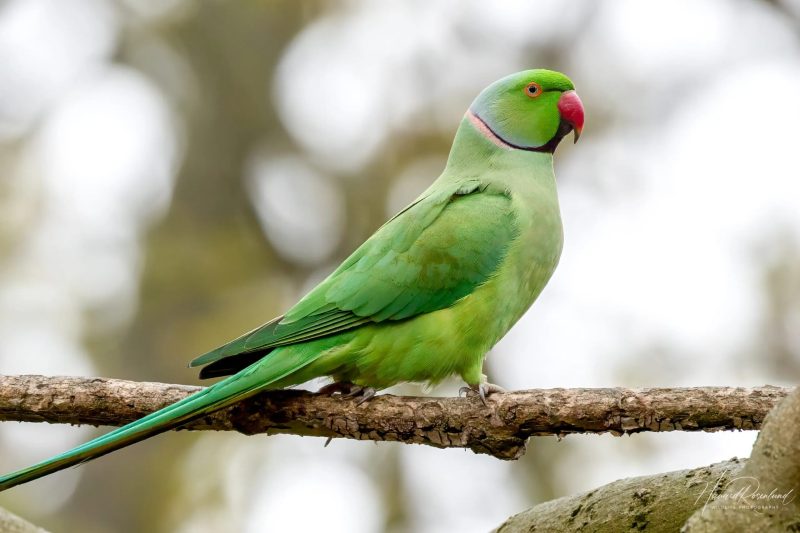
The Rose-ringed Parakeet (Psittacula krameri) is a medium-sized parrot with bright green plumage, a long, pointed tail, and a distinctive red beak. Males have a striking black and pink ring around their neck, while females and juveniles lack this feature.
These highly vocal birds are known for their loud, piercing calls and strong flying ability. They are excellent mimics, capable of imitating human speech and various sounds. Their acrobatic movements and social behavior make them a popular species in both the wild and captivity.
Originally from Africa and South Asia, Rose-ringed Parakeets have established feral populations in many parts of Europe, the Middle East, and the United States. They thrive in urban parks, gardens, and agricultural areas, often forming large, noisy flocks.
Yellow-chevroned Parakeet

The Yellow-chevroned Parakeet (Brotogeris chiriri) is a small, predominantly green parrot with a yellow patch on the edge of its wings, which is most visible in flight. Its compact body, short tail, and dark eyes make it easy to distinguish from other parakeets.
This species is known for its active and social nature, often seen in small flocks chattering and foraging for seeds, fruits, and flowers. They are agile fliers and can maneuver swiftly through dense foliage in search of food.
Native to South America, particularly Brazil, Paraguay, and Argentina, Yellow-chevroned Parakeets have adapted well to urban environments. Feral populations are now found in cities like Los Angeles and Miami, where they thrive in parks and gardens.
White-winged Parakeet
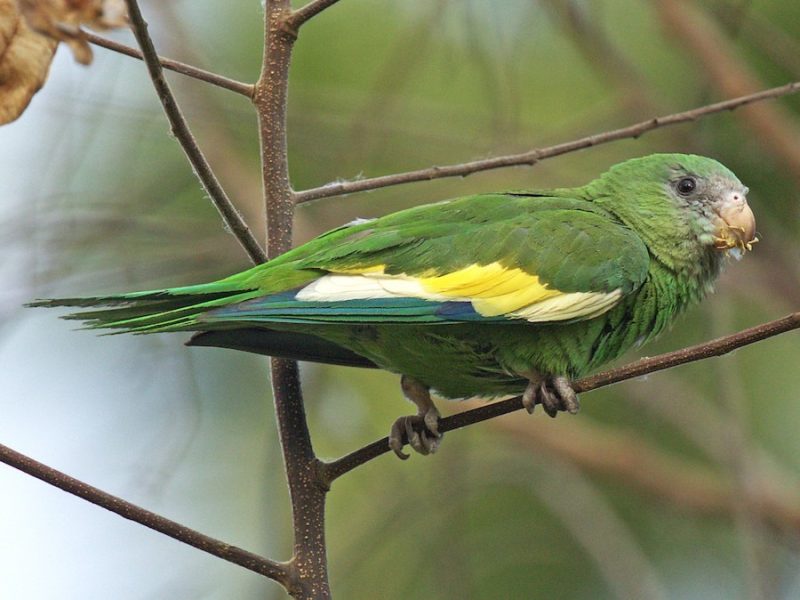
The White-winged Parakeet (Brotogeris versicolurus), also known as the Canary-winged Parakeet, is a small, bright green parrot with white and yellow markings on its wings. It has a short, squared tail and a pale-colored beak.
This species is highly social, often forming noisy flocks that move together in search of food. It feeds on fruits, seeds, and flowers, sometimes raiding agricultural fields. Its rapid, direct flight and high-pitched calls make it easy to identify in the wild.
Originally from the Amazon Basin in South America, White-winged Parakeets have been introduced to several U.S. cities, including Miami. They adapt well to urban environments, often roosting in palm trees and feeding in residential areas.
Mealy Parrot
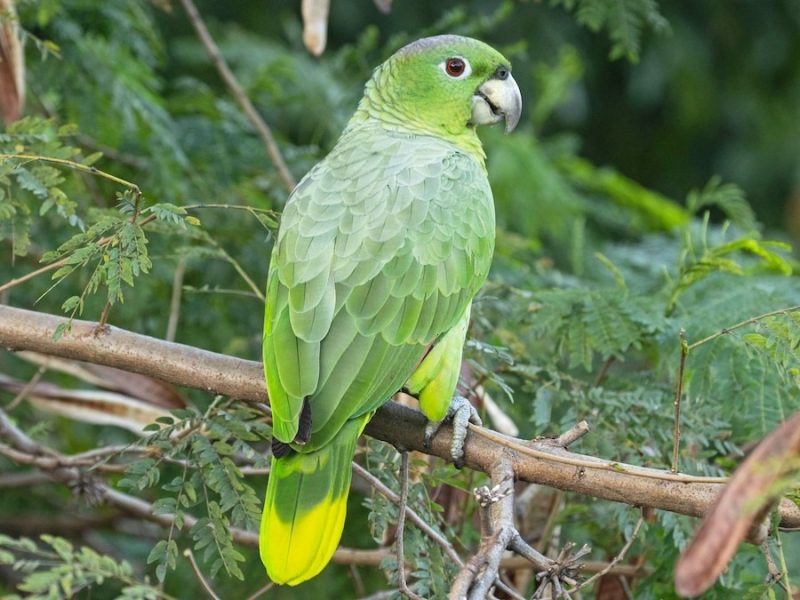
The Mealy Parrot (Amazona farinosa) is one of the largest Amazon parrots, with a primarily green body that appears slightly “dusty” due to a pale, powdery coating on its feathers. It has a sturdy build, a pale beak, and subtle blue or red markings on its head and wings.
Despite its size, this species is relatively quiet compared to other parrots. It produces a variety of grunts, squawks, and whistles, but is less raucous than some of its relatives. Its gentle and calm demeanor makes it a favorite among bird enthusiasts.
Mealy Parrots inhabit lowland rainforests in Central and South America, ranging from Mexico to Brazil. They prefer tall, dense forests but can also be found in plantations and semi-open woodlands. Their diet consists of fruits, seeds, and nuts.
Orange-winged Parrot
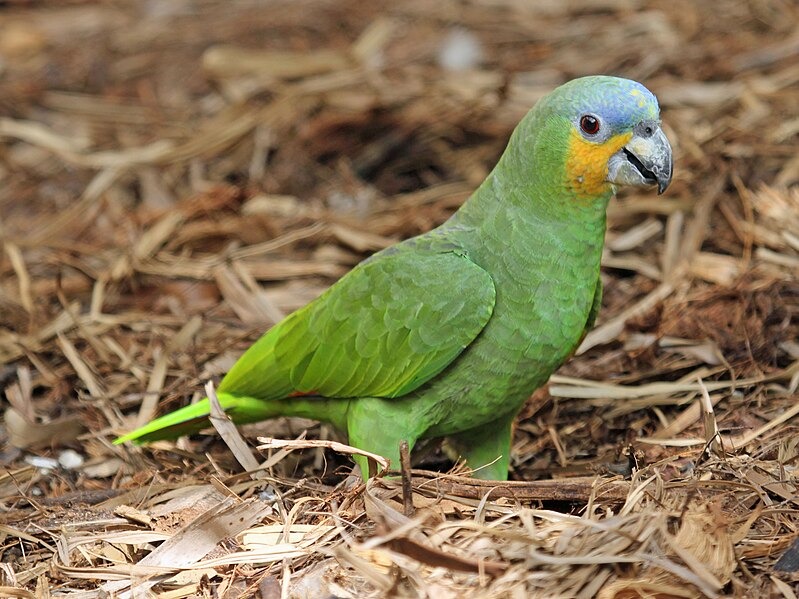
The Orange-winged Parrot (Amazona amazonica) is a medium-sized parrot with bright green plumage, a yellowish face, and distinctive orange patches on its wings, which are most visible in flight. Its beak is a pale horn color, and its tail has hints of yellow and blue.
These parrots are highly social and often seen in pairs or flocks, communicating with loud, harsh calls. They are intelligent and curious, frequently seen exploring their surroundings and foraging for fruits, seeds, and flowers.
Native to South America, Orange-winged Parrots are found in a variety of habitats, including rainforests, mangroves, and urban areas. They are widespread in Brazil, Venezuela, and Colombia, often frequenting farmlands and city parks.
Red-crowned Parrot
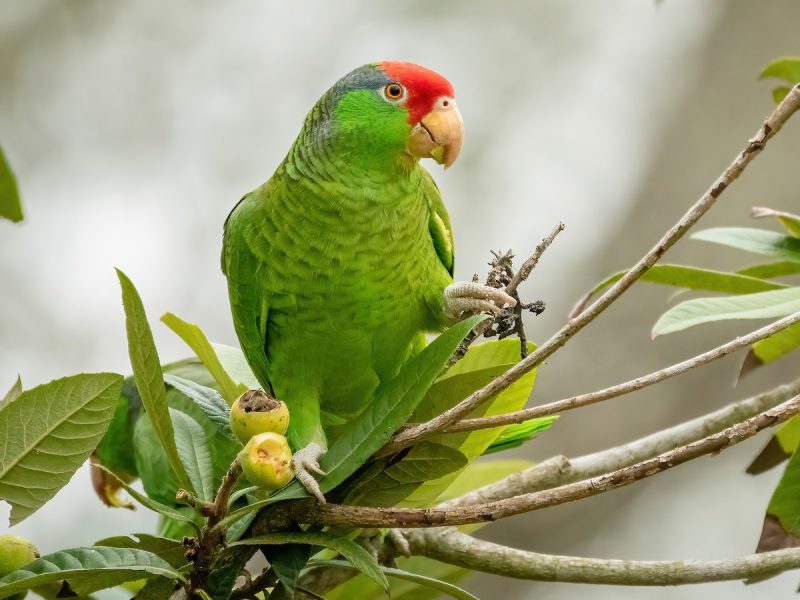
The Red-crowned Parrot (Amazona viridigenalis) is a medium-sized, predominantly green parrot with a bright red forehead and pale bluish feathers around the eyes. Its strong, curved beak is pale ivory, and its tail is short and squared.
This species is known for its loud, harsh calls and highly social behavior. It often forms noisy flocks that roost together in trees. In flight, it displays flashes of blue and red on its wings. Red-crowned Parrots are also skilled mimics, capable of imitating human speech and other sounds.
Native to northeastern Mexico, these parrots inhabit tropical forests and lowland woodlands. Due to habitat destruction and the pet trade, wild populations have declined, but feral populations have been established in Texas and California, where they adapt well to urban environments.
Red-lored Parrot
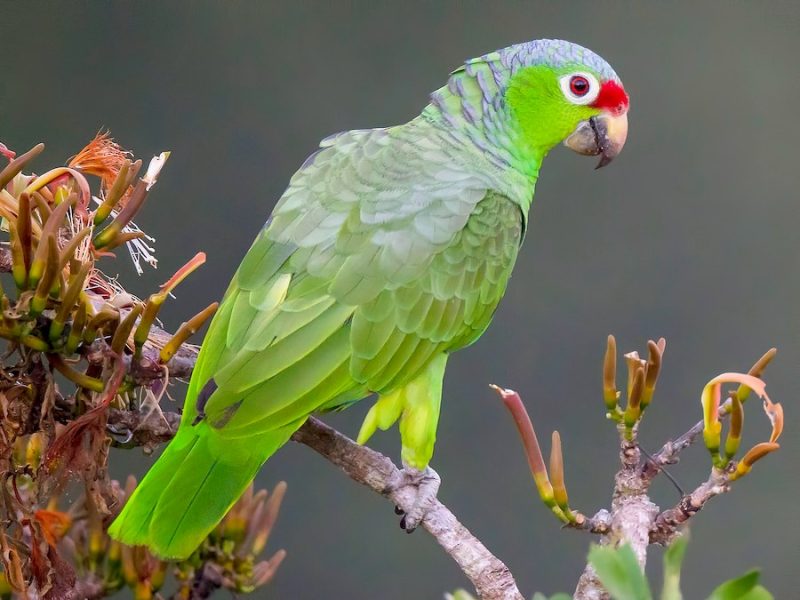
The Red-lored Parrot (Amazona autumnalis) is a striking parrot with bright green plumage, a red patch above its beak, and yellow cheeks. Some individuals may have a slight blue tinge on their crown. It has a sturdy build, a powerful beak, and a short, rounded tail.
This species is known for its loud, squawking calls and strong social bonds. It often moves in pairs or small groups and communicates with a variety of whistles and squawks. Like many Amazona parrots, it has excellent mimicry abilities and can learn to imitate human speech.
Red-lored Parrots are found in Central and South America, from Mexico to Ecuador. They prefer tropical forests, mangroves, and savannas, where they feed on fruits, seeds, and flowers. They are also common in agricultural areas, sometimes feeding on crops.
White-fronted Parrot
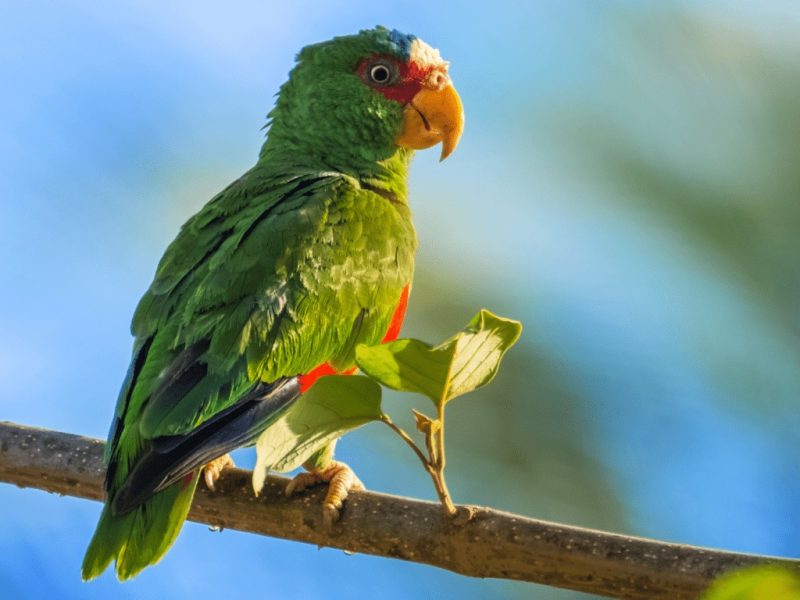
The White-fronted Parrot (Amazona albifrons) is a small, green parrot with a distinctive white patch on its forehead, a red ring around its eyes, and blue markings on its wings. Males have red patches on their shoulders, while females lack this feature.
These parrots are highly vocal, producing a variety of whistles and squawks. They are social birds, often forming flocks outside the breeding season. Unlike some Amazona parrots, White-fronted Parrots tend to be less noisy and more reserved.
They are native to Central America, ranging from Mexico to Costa Rica, where they inhabit dry forests, savannas, and agricultural lands. They often feed on fruits, seeds, and flowers, sometimes foraging in citrus orchards and open woodlands.
Yellow-headed Parrot

The Yellow-headed Parrot (Amazona oratrix), also known as the Yellow-headed Amazon, is a medium-sized parrot with bright green plumage and a striking yellow head. Its beak is pale, and its wings have flashes of red and blue.
This species is highly intelligent and well known for its exceptional mimicry skills. It can develop an extensive vocabulary and imitate various sounds. In the wild, it is often found in small groups, communicating with loud, raucous calls.
Yellow-headed Parrots are native to Mexico and parts of Central America, preferring coastal mangroves, forests, and savannas. Due to habitat loss and illegal trapping for the pet trade, their population has declined, making them a vulnerable species.
Yellow-naped Parrot
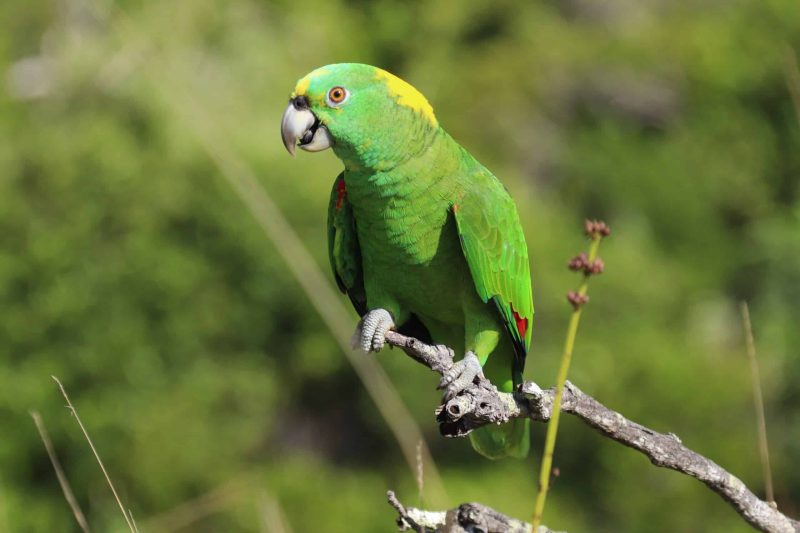
The Yellow-naped Parrot (Amazona auropalliata) is a green parrot with a distinctive yellow patch on the back of its neck. It has a sturdy build, a short, square tail, and a powerful beak adapted for cracking nuts and seeds.
This species is among the best talkers in the parrot world, capable of imitating human speech with remarkable clarity. In the wild, they are highly social and often found in pairs or small flocks. Their calls include whistles, squawks, and melodic notes.
Yellow-naped Parrots inhabit forests and woodlands in Central America, from southern Mexico to Costa Rica. They prefer tropical lowlands and coastal areas but are increasingly threatened by deforestation and illegal trapping for the pet trade.
Eurasian Siskin
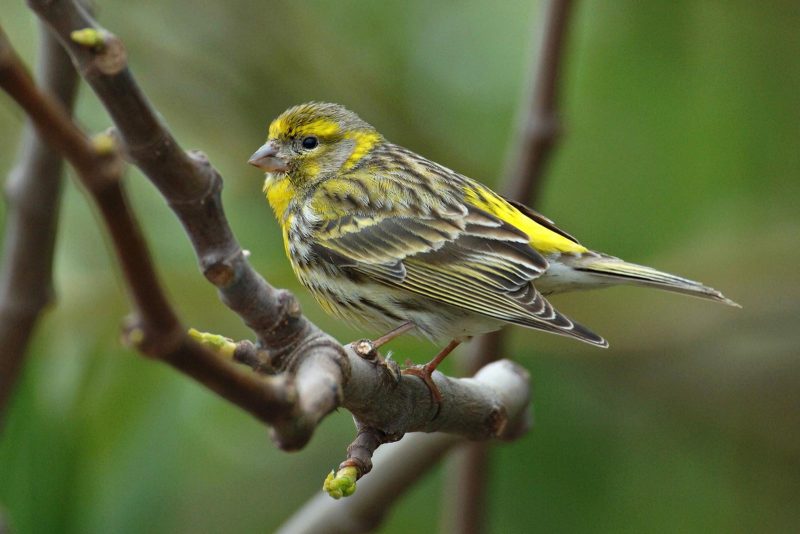
The Eurasian Siskin (Spinus spinus) is a small finch with yellow-green plumage, a streaked back, and a distinctive black cap and bib in males. Females are duller, with more subdued coloration and heavier streaking. Both sexes have bright yellow wing bars and a short, pointed bill.
These birds are acrobatic and energetic, often seen clinging to the ends of branches while foraging for seeds. They have a rapid, twittering song and frequently form large, lively flocks in winter, mixing with other finches.
Eurasian Siskins are found across Europe and Asia, inhabiting coniferous forests, woodlands, and parks. During migration, they move south to more temperate regions, including parts of North Africa. Their diet consists mainly of seeds from alder, birch, and spruce trees.
Pine Siskin

The Pine Siskin (Spinus pinus) is a small finch, characterized by its streaked brown body, yellowish wings, and a slightly forked tail. It has a sharp, conical bill that is ideal for cracking seeds, and its yellow wing markings are more visible during flight.
These birds are highly social and often seen in flocks, feeding on seeds from conifer trees like pines and spruces, but they will also frequent feeders. Their songs are a series of high-pitched, twittering notes, and they are known for their acrobatic movements while foraging.
Pine Siskins are found across North America, from Canada to the northern United States. During the winter months, they may migrate to lower altitudes and even southward into Mexico. They prefer coniferous forests but can adapt to urban parks and gardens.
Olive Sparrow
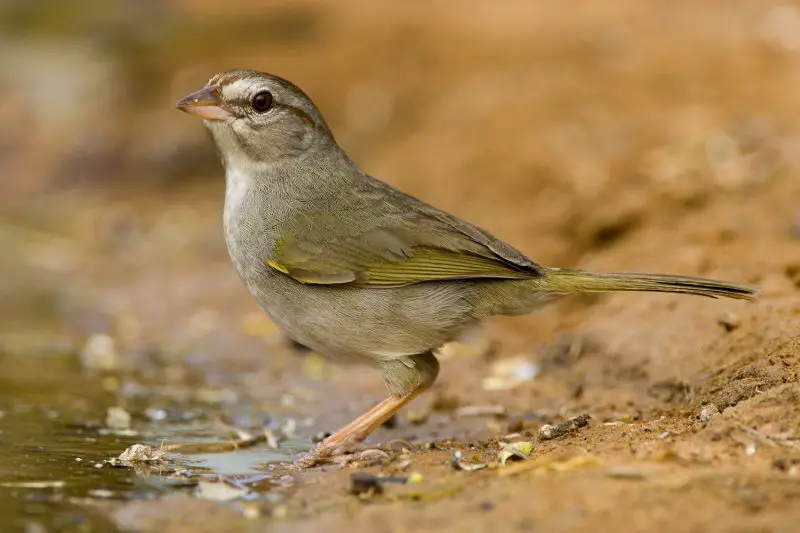
The Olive Sparrow (Arremonops rufivirgatus) is a small, secretive bird with olive-brown plumage, a pale yellowish belly, and a distinctive reddish-brown patch on its face. Its relatively plain appearance is offset by its striking black streaked markings on the back and wings.
This species is mostly heard rather than seen, as it prefers to stay hidden in dense undergrowth and bushes. Its song is a low, soft chirp, often repeated in the same rhythm. Olive Sparrows are known to be territorial, especially during the breeding season.
Native to the southwestern United States, Mexico, and parts of Central America, Olive Sparrows inhabit dense shrubby areas, such as desert scrublands, mesquite groves, and lowland forests. They forage on the ground for seeds and insects, using their camouflage to avoid predators.
Violet-green Swallow
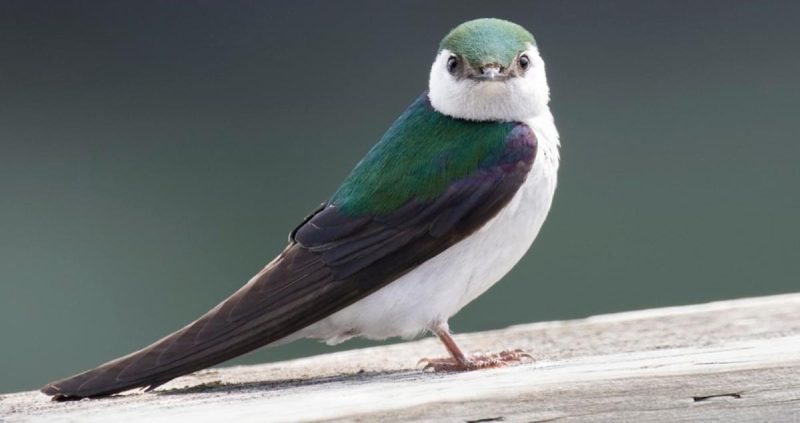
The Violet-green Swallow (Tachycineta thalassina) is a small, agile bird with a striking combination of iridescent green and violet feathers. It has a white belly, a slightly forked tail, and a sleek, streamlined body built for fast flight.
These swallows are known for their acrobatics, swooping and diving through the air to catch flying insects. Their chirping calls are often heard during their rapid flights. Violet-green Swallows are migratory and often seen in large flocks during migration periods.
Native to North America, these swallows breed in the western United States, Canada, and Mexico. They prefer open woodlands and areas near water where they can easily hunt for insects. During the winter, they migrate to southern parts of the U.S., Mexico, and Central America.
Green-tailed Towhee
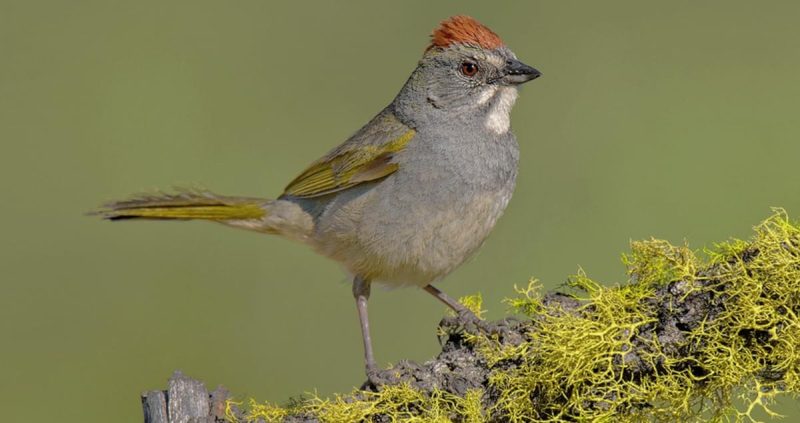
The Green-tailed Towhee (Pipilo chlorurus) is a medium-sized sparrow with a distinctive olive-green tail, a brown back, and a grayish face. It has a pale belly and a reddish-brown patch on its wings, which becomes more noticeable when it spreads its wings.
Green-tailed Towhees are typically found foraging on the ground, where they search for seeds, berries, and insects. They are known for their scratching behavior, using their feet to dig through the leaf litter. Their song is a series of sharp, mechanical notes.
This species is native to the western United States, including the southwestern U.S., Mexico, and parts of the Rocky Mountains. They prefer dense shrubs and low thickets in habitats like chaparral, riparian areas, and forests.
Black-capped Vireo
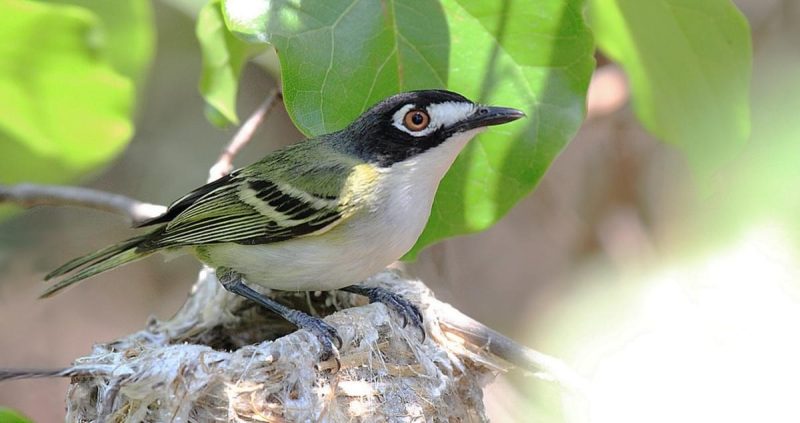
The Black-capped Vireo (Vireo atricapilla) is a small songbird with a black cap on its head, a white throat, and olive-green plumage. It has a distinctive white ring around its eyes and a pale belly. The contrast between its black cap and pale face gives it a striking appearance.
This species is known for its sweet, melodic song, which consists of a series of high-pitched whistles and trills. Black-capped Vireos are often seen hopping from branch to branch, foraging for insects, especially caterpillars and spiders.
Native to the central and southwestern United States, Black-capped Vireos breed in scrubby, brushy habitats, including oak savannas and mesquite thickets. They are migratory, wintering in parts of Mexico. Habitat loss and fragmentation have made them a species of concern.
Black-whiskered Vireo
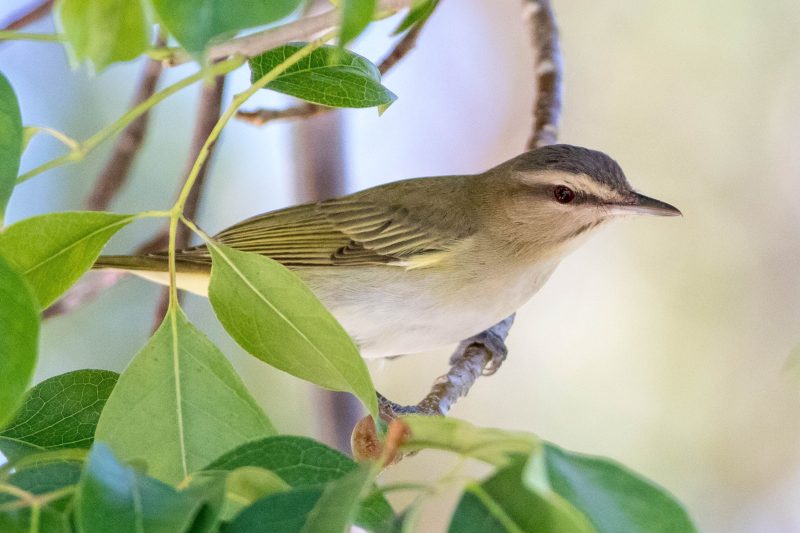
The Black-whiskered Vireo (Vireo altiloquus) is a small, olive-green bird with a distinctive black line running from the bill through the eyes, resembling whiskers. It has a white belly, and its wings are olive-brown with a subtle yellowish tinge.
This vireo is known for its soft, melodious song, which is often described as a series of sweet whistles and trills. Black-whiskered Vireos are often seen flitting among the leaves of trees and shrubs, foraging for insects and small fruit.
Native to the Caribbean, the Black-whiskered Vireo is primarily found in Cuba, the Bahamas, and parts of the Florida Keys. It prefers dense forest edges and coastal thickets, where it nests in the dense foliage of trees.
Blue-headed Vireo
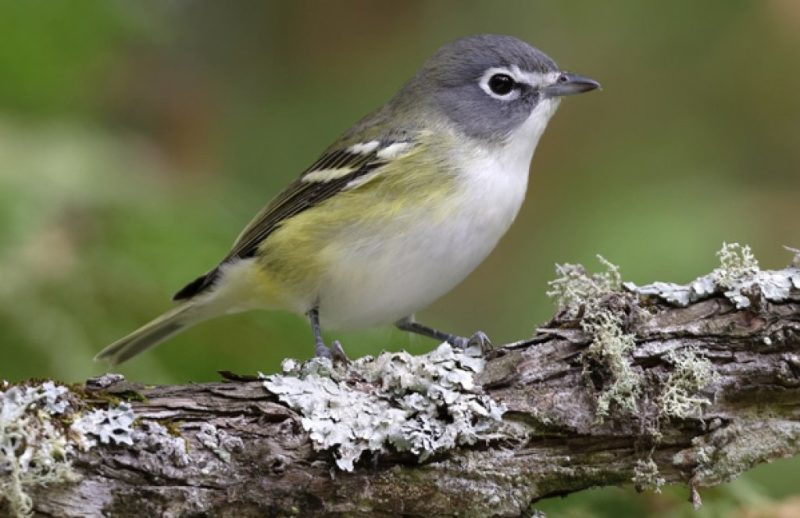
The Blue-headed Vireo (Vireo solitarius) is a small, striking bird with a blue-gray head, olive-green back, and a white belly. It has a distinctive white ring around its eyes, and its wings and tail are dark with white edges, giving it a beautiful contrast in flight.
Blue-headed Vireos are highly active and often seen moving through the trees, foraging for insects and berries. Their song is a series of sharp, melodious whistles that echo through their habitat. These birds are known for their solitary nature, usually seen alone or in small groups.
This species is found primarily in the northeastern United States and parts of Canada, where it prefers mixed woodlands and coniferous forests. During the winter, it migrates to the southern U.S. and parts of Central America.
Cassin’s Vireo
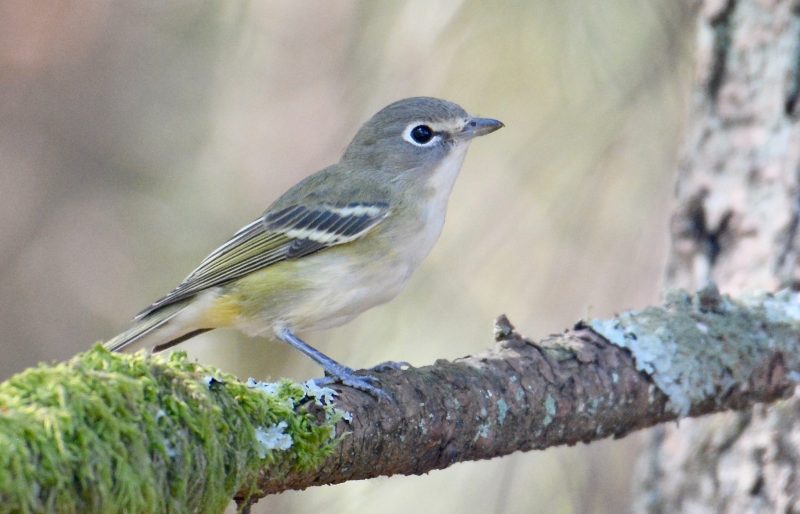
Cassin’s Vireo (Vireo cassinii) is a small songbird characterized by its olive-green back, white belly, and a pale grayish-blue head. It has a distinct dark line running through its eyes, which gives it a unique appearance. Its wings are dark, with pale edges.
Known for its clear, melodious song, Cassin’s Vireo sings a series of sweet, buzzy notes. This bird is often seen in trees, foraging for insects and small fruits. It has a calm and inquisitive demeanor, hopping between branches while searching for food.
Native to the western United States, Cassin’s Vireo breeds in oak woodlands, scrublands, and coniferous forests. During the winter, it migrates to parts of Mexico and Central America. It is a somewhat secretive bird, preferring to stay hidden in dense foliage.
Cuban Vireo
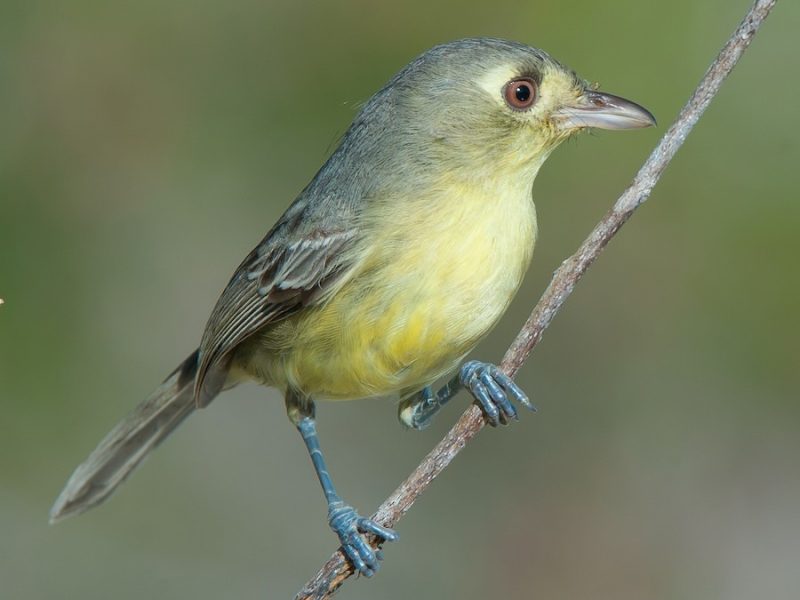
The Cuban Vireo (Vireo gundlachii) is a small, olive-brown bird with a distinctive yellowish-green back and a white belly. It has a pale grayish-blue head, and its wings are dark with pale streaks. One of its most distinguishing features is the dark line running through its eye, resembling whiskers.
This species is known for its gentle, warbling song, which consists of soft, melodic whistles. Cuban Vireos are usually found in pairs or small groups, foraging in the canopies of trees for insects and berries. They are relatively quiet and elusive, often hiding in the thick foliage.
Native to Cuba, this species is primarily found in subtropical and tropical forests. It prefers dense, moist habitats such as coastal forests and lowland woodlands. Due to habitat loss and human activity, the Cuban Vireo is considered a species of conservation concern.
Red-eyed Vireo

The Red-eyed Vireo (Vireo olivaceus) is a small, medium-sized songbird with a striking red eye, olive-brown back, and white underparts. It has a dark line running through its eyes, giving it a slightly stern appearance. The wings and tail are dark with white edges, and its bill is short and slightly hooked.
Known for its energetic song, the Red-eyed Vireo sings a series of fast, repetitive phrases throughout the day. It has a reputation for being one of the most persistent singers among North American birds, often heard long after other birds have quieted.
This species is found throughout North America, particularly in deciduous forests, woodlands, and riparian habitats. Red-eyed Vireos migrate south for the winter, heading to Central and South America. They are common in forests with dense canopy layers where they forage for insects.
Thick-billed Vireo
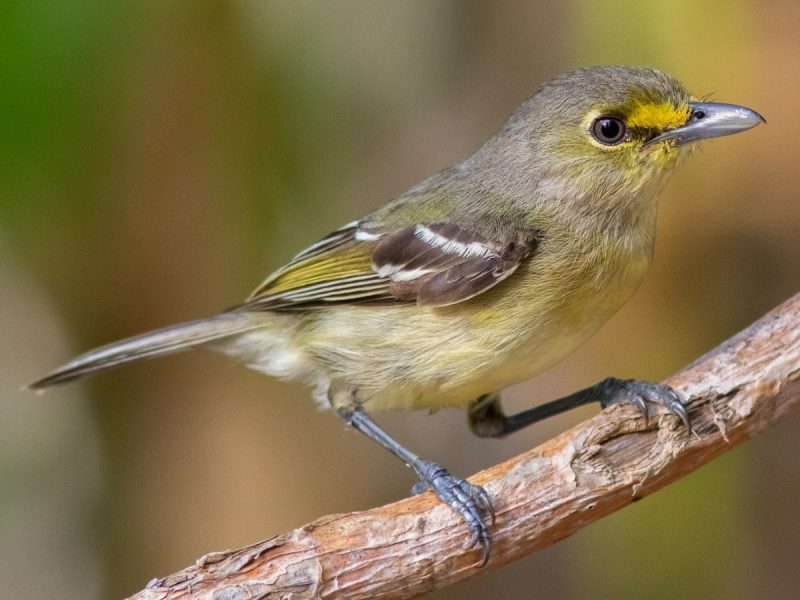
The Thick-billed Vireo (Vireo crassirostris) is a small bird with a broad, stout bill, olive-green upperparts, and pale underparts. It has a slightly darker crown and a light-colored ring around its eyes, giving it a curious appearance. The wings are dark, with light streaks, and the tail is short and slightly rounded.
Thick-billed Vireos are generally quiet birds, with a soft, buzzy song that they sing from the foliage of trees. They forage primarily for insects, which they hunt among the leaves, often hanging upside down or moving along branches.
Native to the southwestern United States and parts of Mexico, the Thick-billed Vireo prefers desert scrublands, mesquite groves, and riparian areas. It is a migratory species, moving south to Mexico and Central America during the winter months. Habitat loss has led to some concerns about the bird’s long-term conservation.
White-eyed Vireo
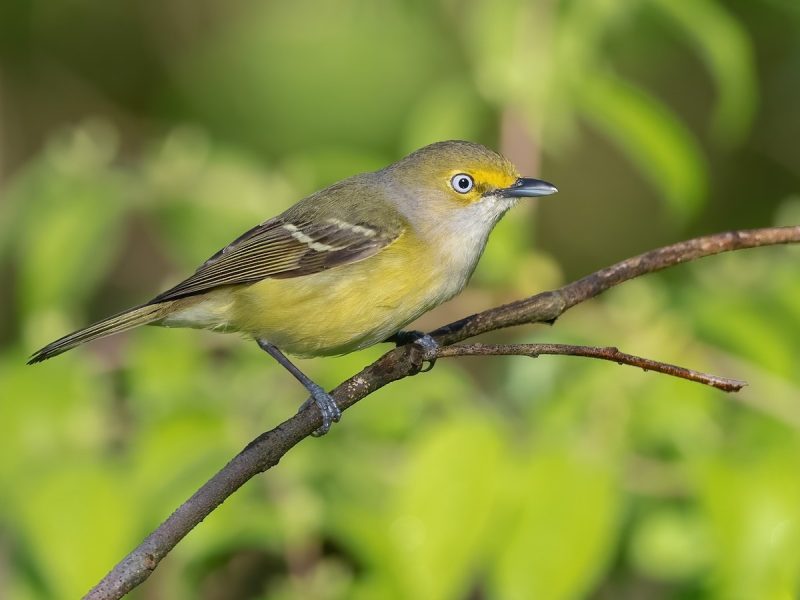
The White-eyed Vireo (Vireo griseus) is a small, striking bird with a distinctive bright white ring around its eyes, contrasting against its olive-green back and pale yellow belly. Its wings are dark with light streaks, and it has a slightly curved bill that helps it forage for insects.
White-eyed Vireos are known for their loud, harsh song, which is often a series of sharp, choppy notes. They are highly active and can often be seen hopping through dense vegetation, looking for insects, spiders, and fruit. These birds are territorial and may sing continuously throughout the day.
Native to the southeastern United States, White-eyed Vireos thrive in lowland forests, riparian areas, and shrubby woodlands. During migration, they can be found throughout the eastern U.S., and they typically migrate to Central America and the Caribbean for the winter.
Yellow-green Vireo
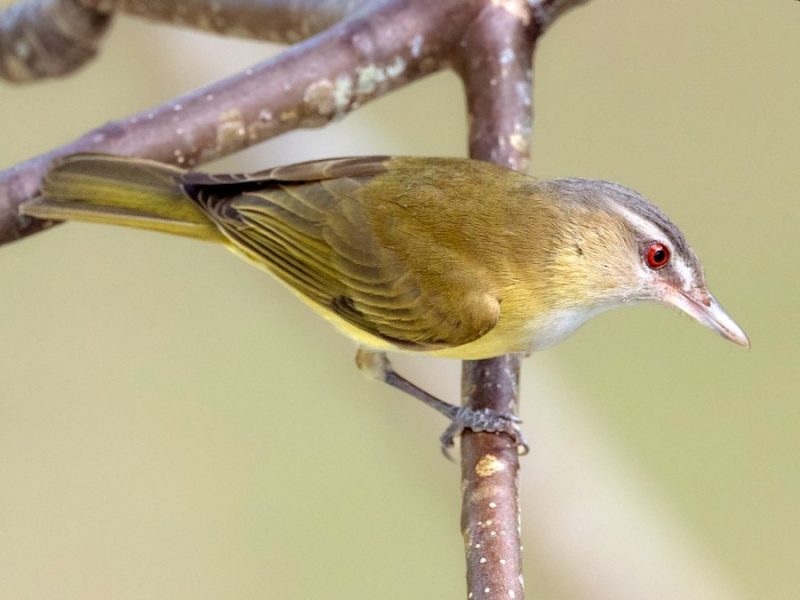
The Yellow-green Vireo (Vireo flavoviridis) is a small, olive-green songbird with a yellowish-green wash on its underparts and a pale yellow belly. It has a distinct black line running through its eyes and a slightly dark crown. Its wings and tail are dark, with white markings along the edges.
Yellow-green Vireos are known for their soft, melodic songs, often consisting of sweet, musical whistles. These vireos are typically found in pairs or small groups, foraging for insects and small fruits among the dense foliage of trees. They are quiet and elusive, often staying hidden in the canopy.
Native to Central America, the Yellow-green Vireo is primarily found in tropical and subtropical forests, especially along the Gulf Coast of the United States and into Mexico. This species migrates north in the spring and is usually seen in the southern U.S. during the warmer months.
Orange-crowned Warbler
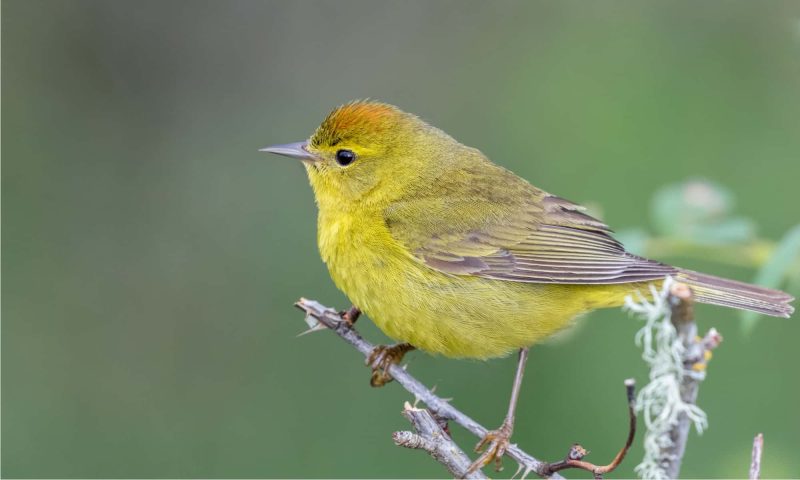
The Orange-crowned Warbler (Leiothlypis celata) is a small, energetic songbird that gets its name from the subtle orange patch on its crown, which is often hard to see. It has a greenish-yellow body with a pale underbelly and dark wings, making it quite inconspicuous in its natural environment.
Orange-crowned Warblers are known for their high-pitched, sweet songs, which can vary in pitch and rhythm. They are often seen flitting through shrubs and low branches of trees, searching for insects, seeds, and berries. These warblers are solitary or found in small groups during migration.
This species is widespread across North America, from Alaska down to Mexico. During the breeding season, it prefers dense, shrubby habitats like woodland edges, riparian areas, and scrublands. In winter, it migrates to the southern U.S. and parts of Central America.

